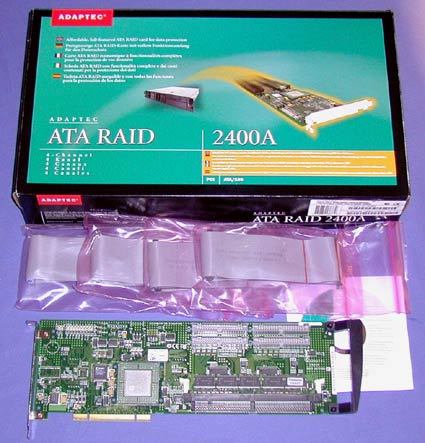IDE Training Course, Part 3: Using RAID
RAID Levels: Security And Performance At A Glance
| RAID | Number of drives | Data security | Availability | Capacity | Performance | Cost |
|---|---|---|---|---|---|---|
| 0 | 1+ | unsatisfactory | bad | 100% | very good | very low |
| 1 | 2 | good | good | 50% | satisfactory | low |
| 3 | 3+ | satisfactory | good | (x-1) / x | satisfactory | medium |
| 5 | 3+ | satisfactory | good | (x-1) / x | good | medium |
| 0+1 | 4,6,8... | good | good | 50% | good | medium |
The Key To Success: Block Size
In RAID arrays, the block size generally also determines the stripe size (not in RAID 1). The principles concerning block size and wasted memory space apply equally to RAID configurations: if, for example, the blocks have a size of 64 kB, then at least 64 kB are written at all times - even if there's only a text file with 2 kB. So, the smaller the average file size, the smaller the block size should be.
But block size is also significant in terms of the performance to be expected, as the smallest unit also determines when a file can be distributed to two or more drives. This would mean that with a block size of 64 kB, files with less than 64 kB would be written to only one hard drive. This does not happen any faster in a RAID array than on a single hard drive.
On the other hand, a file with 150 kB would be distributed to three hard drives (if available): 64 + 64 + 22 kB. The controller is now able to read from all three drives simultaneously, which reduces the read operation immensely.
RAID In Perfection: Adaptec ATA RAID 2400A
Adaptec is one of the indispensable giants, especially in the SCSI sector. The current champion in the IDE sector is the ATA RAID 2400A.
- Four channels for each device
- UltraATA/100
- supports RAID modes 0, 1, and 5
- One DIMM slot for on-board memory up to 128 MB, 32 MB included
- full size 32 bit PCI card
On the controller card, next to the i960, you'll find two HPT370 chips from HighPoint - one of Promise's biggest competitors (see below).
Get Tom's Hardware's best news and in-depth reviews, straight to your inbox.
Current page: RAID Levels: Security And Performance At A Glance
Prev Page The Sky's The Limit: Nested RAID Next Page HighPoint RocketRAID 404: Conventional But With 4 Channels
Patrick Schmid was the editor-in-chief for Tom's Hardware from 2005 to 2006. He wrote numerous articles on a wide range of hardware topics, including storage, CPUs, and system builds.
